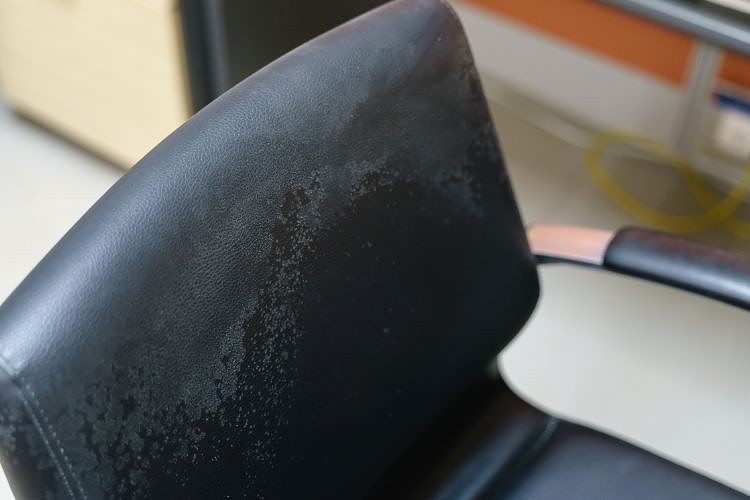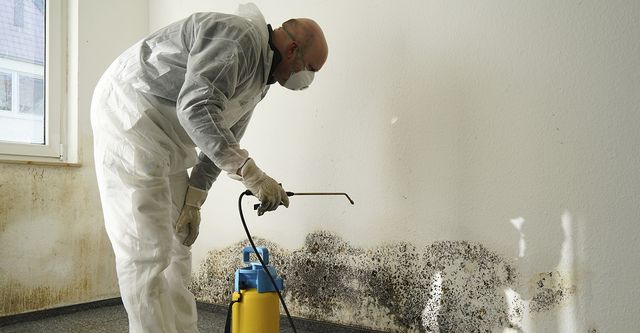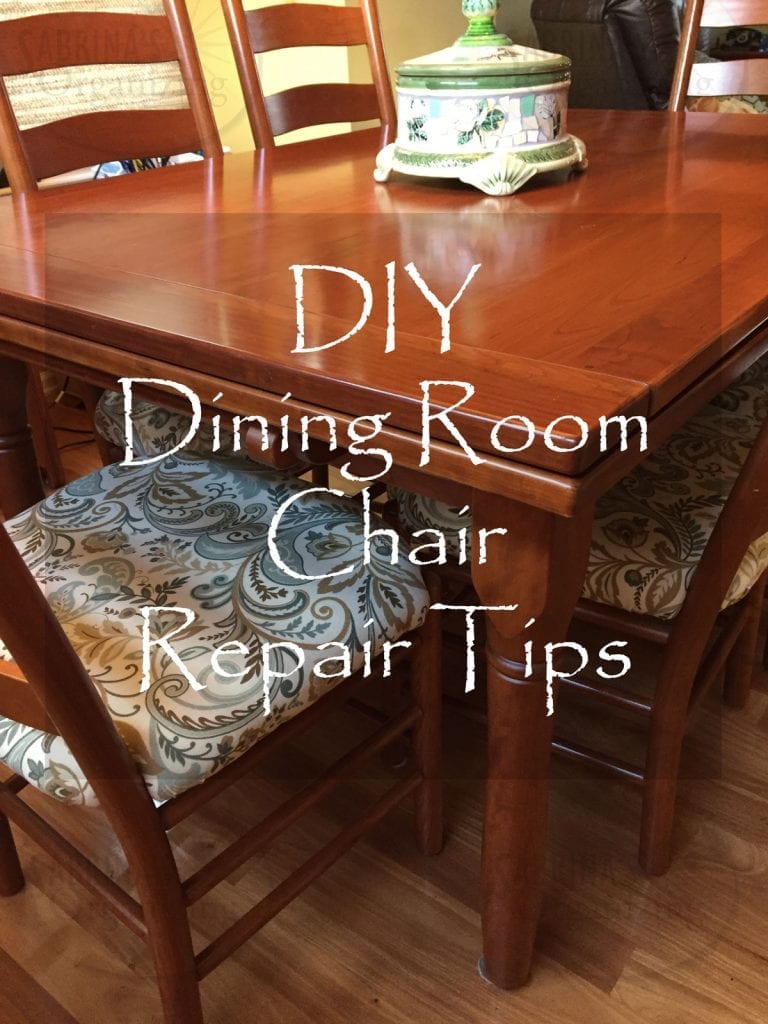Mold is a common problem in many homes and can often be found on dining room chairs. Not only is it unsightly, but it can also pose health risks if left untreated. In this article, we will discuss the top 10 ways to deal with mold on dining room chairs and prevent it from coming back. Mold on dining room chairs:
The first step in dealing with mold on dining room chairs is to remove it. Start by vacuuming the affected area to remove any loose mold spores. Next, mix equal parts water and white vinegar in a spray bottle. Spray the solution onto the affected area and let it sit for 15-20 minutes. Then, use a scrub brush to gently scrub the mold away. Wipe down the area with a clean cloth and repeat if necessary. How to remove mold from dining room chairs:
Prevention is key when it comes to mold growth. To prevent mold from growing on your dining room chairs, make sure to keep the area well-ventilated and dry. This will help to prevent moisture buildup, which is a breeding ground for mold. Additionally, avoid placing wet or damp items on your chairs and regularly clean and inspect them for any signs of mold. Preventing mold growth on dining room chairs:
If your dining room chairs are upholstered, cleaning mold can be a bit trickier. Start by mixing a solution of mild detergent and water. Dip a clean cloth into the solution and wring it out, then gently scrub the affected area. Be sure to only use a small amount of water to avoid saturating the fabric. Afterward, use a dry cloth to blot the area and let it air dry completely. Cleaning mold off of upholstered dining room chairs:
If you prefer to use natural remedies, there are several options for removing mold from dining room chairs. Tea tree oil, grapefruit seed extract, and vinegar are all effective in killing mold. Simply mix a small amount with water and spray onto the affected area. Let it sit for 15-20 minutes before wiping it away. Natural remedies for mold on dining room chairs:
If you're looking for a preventative measure, consider investing in mold-resistant dining room chair covers. These covers are made with materials that are resistant to mold growth and can easily be removed and washed if any mold does occur. They are a great way to protect your dining room chairs and keep them looking new. Mold-resistant dining room chair covers:
If the mold on your dining room chairs is severe or covers a large area, it may be best to seek professional help. Mold removal companies have the necessary tools and expertise to effectively remove mold and prevent it from coming back. They can also inspect your chairs for any hidden mold that may be difficult to see. Professional mold removal for dining room chairs:
If you prefer to tackle mold removal on your own, there are several DIY methods that can be effective. Aside from the methods mentioned above, you can also use hydrogen peroxide, baking soda, or borax to remove mold. These ingredients are all natural and can be mixed with water to create a paste, which can then be applied to the affected area. DIY mold removal for dining room chairs:
Regularly inspecting your dining room chairs for mold is key in preventing it from becoming a bigger problem. Look for any visible signs of mold, such as discoloration or a musty smell. If you notice any mold, be sure to clean it immediately and thoroughly. Mold inspection for dining room chairs:
In addition to keeping your dining room well-ventilated and dry, there are other steps you can take to prevent mold growth on your chairs. Consider using a dehumidifier in the room to reduce moisture, and regularly clean and disinfect your chairs to prevent any mold from forming. Additionally, avoid placing any potted plants or other items that may retain moisture on your chairs. Dealing with mold on dining room chairs can be a frustrating and time-consuming task, but by following these top 10 tips, you can effectively remove mold and prevent it from coming back. Remember to regularly inspect and clean your chairs to keep them mold-free and in great condition. Mold prevention tips for dining room chairs:
Preventing Mold on Dining Room Chairs

Understanding the Causes of Mold Growth
 Mold on dining room chairs is a common problem that many homeowners face. Not only can it be unsightly, but it can also pose health risks to those living in the house. The first step in preventing mold growth on your dining room chairs is understanding what causes it. Mold thrives in warm and damp environments, making your dining room, with its potential for spills and high humidity, a prime breeding ground.
Mold on dining room chairs is a common problem that many homeowners face. Not only can it be unsightly, but it can also pose health risks to those living in the house. The first step in preventing mold growth on your dining room chairs is understanding what causes it. Mold thrives in warm and damp environments, making your dining room, with its potential for spills and high humidity, a prime breeding ground.
Proper Cleaning and Maintenance
 The best way to prevent mold growth on your dining room chairs is to keep them clean and well-maintained. Regularly dusting and vacuuming the chairs can help remove any spores that may be present. It is also important to promptly clean up any spills or stains to prevent moisture from seeping into the fabric or wood of the chairs. Additionally, regularly wiping down the chairs with a mixture of water and vinegar can help kill any existing mold and prevent new growth.
The best way to prevent mold growth on your dining room chairs is to keep them clean and well-maintained. Regularly dusting and vacuuming the chairs can help remove any spores that may be present. It is also important to promptly clean up any spills or stains to prevent moisture from seeping into the fabric or wood of the chairs. Additionally, regularly wiping down the chairs with a mixture of water and vinegar can help kill any existing mold and prevent new growth.
Proper Ventilation and Humidity Control
 As mentioned earlier, mold thrives in warm and damp environments, so it is essential to properly ventilate your dining room to prevent mold growth. Opening windows or using a dehumidifier can help reduce the humidity in the room. It is also important to check for any signs of leaks or water damage in the walls or ceiling of your dining room, as these can contribute to excess moisture.
As mentioned earlier, mold thrives in warm and damp environments, so it is essential to properly ventilate your dining room to prevent mold growth. Opening windows or using a dehumidifier can help reduce the humidity in the room. It is also important to check for any signs of leaks or water damage in the walls or ceiling of your dining room, as these can contribute to excess moisture.
Invest in Mold-Resistant Materials
 If you are in the process of designing or renovating your dining room, consider investing in mold-resistant materials for your chairs. Mold-resistant fabrics and wood finishes are specifically designed to resist mold growth, making them a great choice for dining room chairs. While they may be a bit more expensive, they can save you the hassle and cost of dealing with mold in the future.
If you are in the process of designing or renovating your dining room, consider investing in mold-resistant materials for your chairs. Mold-resistant fabrics and wood finishes are specifically designed to resist mold growth, making them a great choice for dining room chairs. While they may be a bit more expensive, they can save you the hassle and cost of dealing with mold in the future.
































































































